Art Deco Modes of Transportation
![The Normandie making its way to the New York City harbor, from the brochure of the Normandie's maiden voyage, Gangplank (1935)]](https://cdn.sanity.io/images/cctd4ker/production/74bb33c70bd5b5acbc27c0fd4264ee598c7ac47d-595x399.jpg?w=3840&q=75&fit=clip&auto=format)
The Normandie making its way to the New York City harbor, from the brochure of the Normandie's maiden voyage (1935)
«This summer, Watson celebrates the enjoyment of travel with a display of trade catalogs featuring Art Deco modes of transportation: trains, ships, automobiles, perambulators—you name it!»

Franklin Automobile Company (1902–1934) advertising the Series 12B "Airman Limited"
One of our vitrines showcases a vibrant catalog from the Franklin Automobile Company (1902–1934) advertising the Series 12B "Airman Limited" line of colorful cars. Franklin was the first automobile company to develop an air-cooled engine. The watercolor renderings emphasize the vehicles' sumptuous interiors and highlight the appealing attributes of this luxury car.
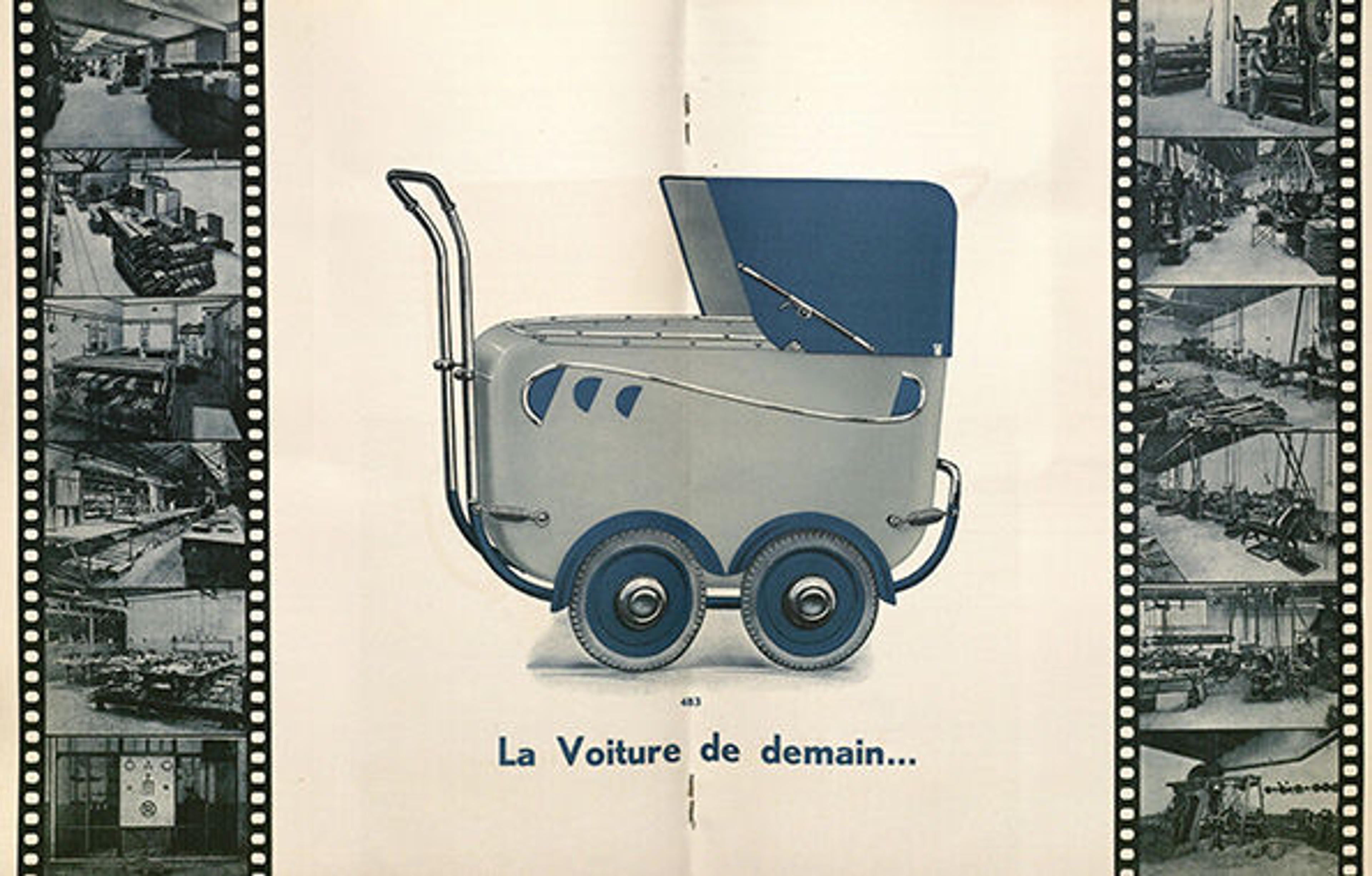
Tubular steel baby prams and strollers
The display also features Art Deco–inspired tubular steel baby prams and strollers in a striking catalog, with product illustrations and photographic reproductions of company factory operations.
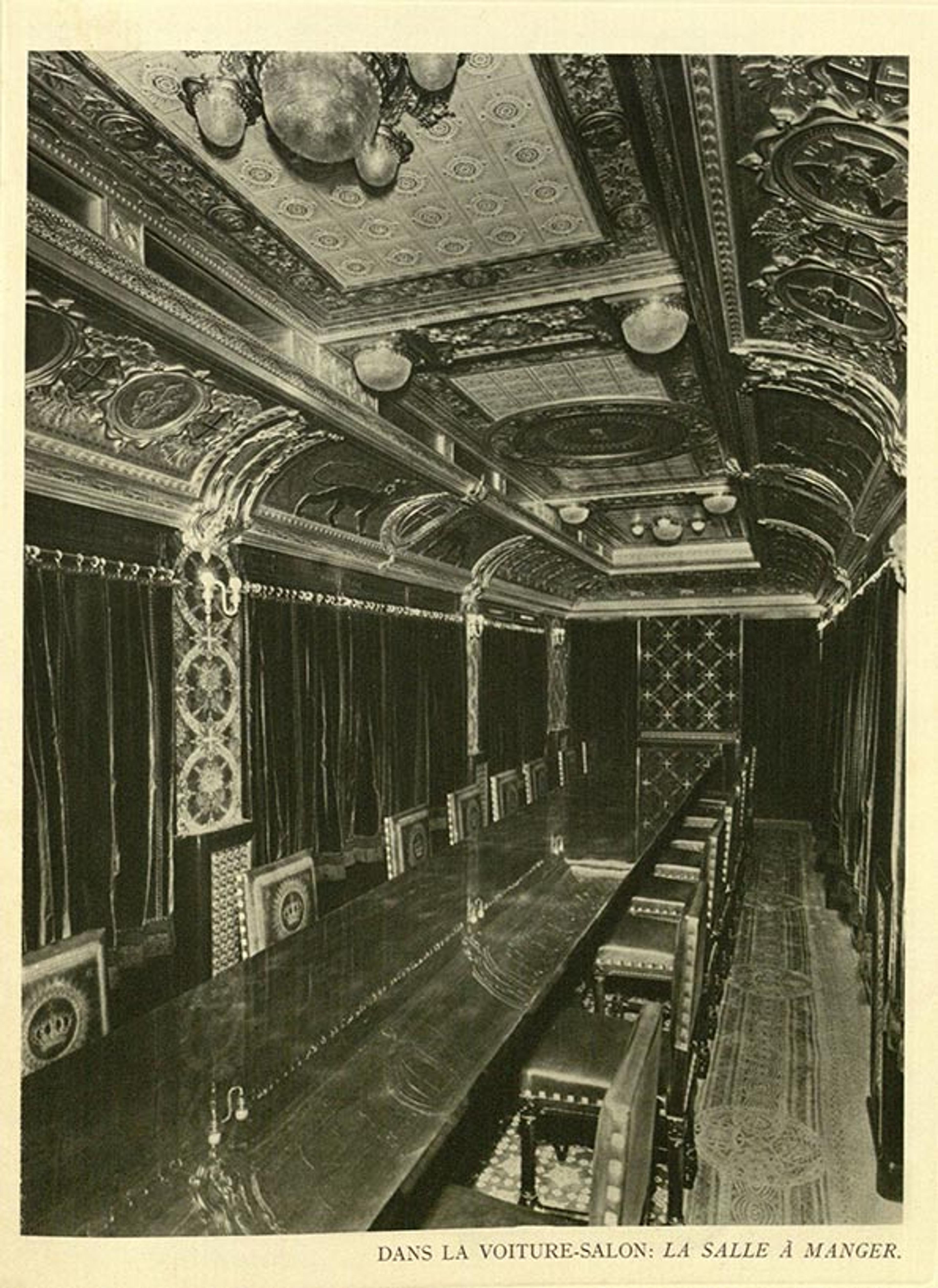
Fiat's 1929 commemorative publication
Another rare catalog on display is Fiat's 1929 commemorative publication celebrating both the train's launch and the work of supervising designer Giulio Casanova. Photographic illustrations throughout advertise the elaborate detailing of the train interiors, including a special car for the queen and overall decoration based on heraldic symbolism from the House of Savoy.
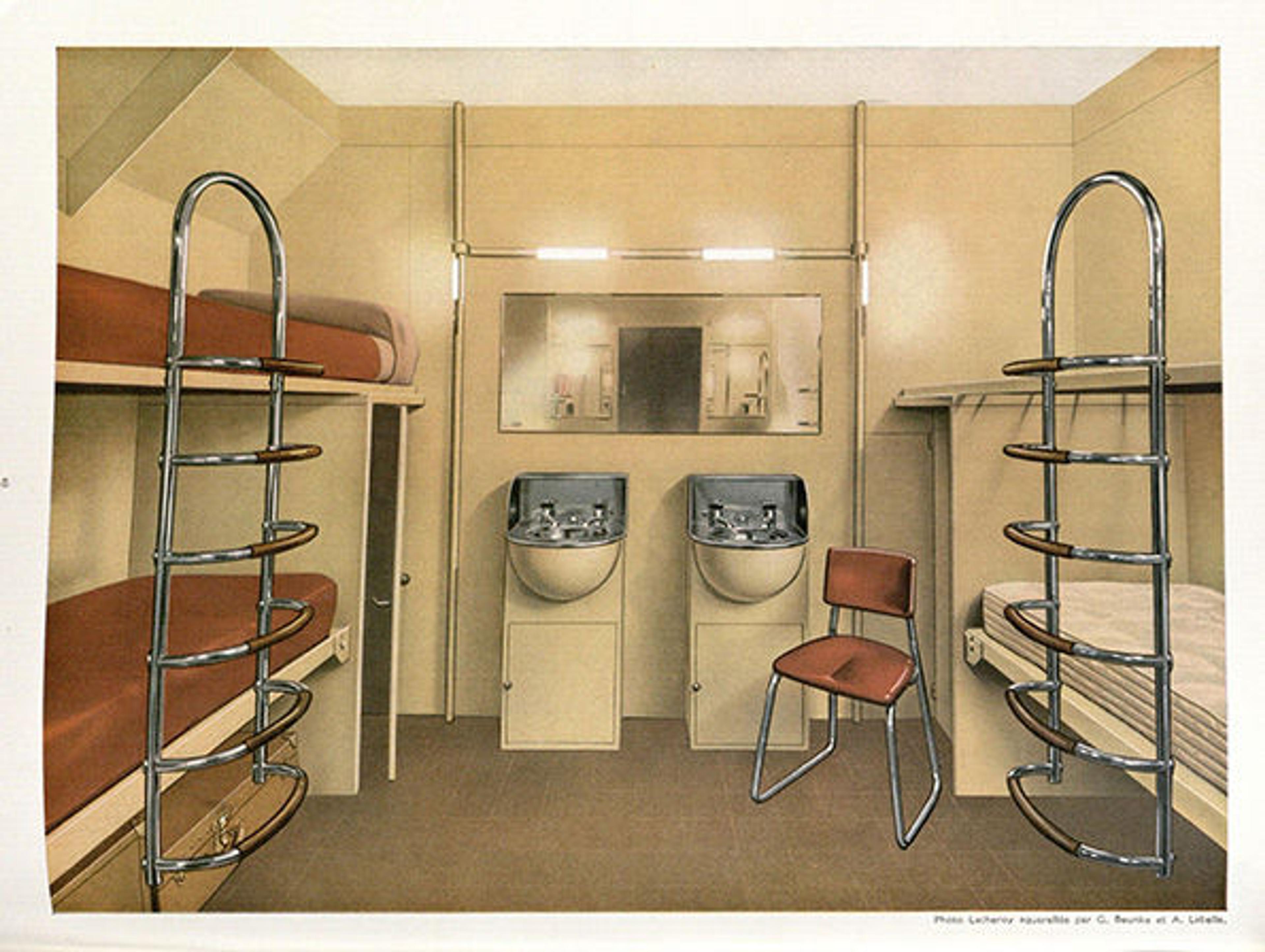
Acier: cabines en acier de paquebots (1935)
Watson's tribute to transport also features three international cruise ship catalogs and brochures from the 1930s through 1960s. Acier: cabines en acier de paquebots (1935) showcases cabin designs by noted French designers including Robert Mallet-Stevens, Ateliers Jean Prouvé, Pierre Chareau, and René Herbst. Acier is accented by vivid watercolors of streamlined interior spaces, some of which feature Louis Vuitton suitcases with the company's signature monogram design.
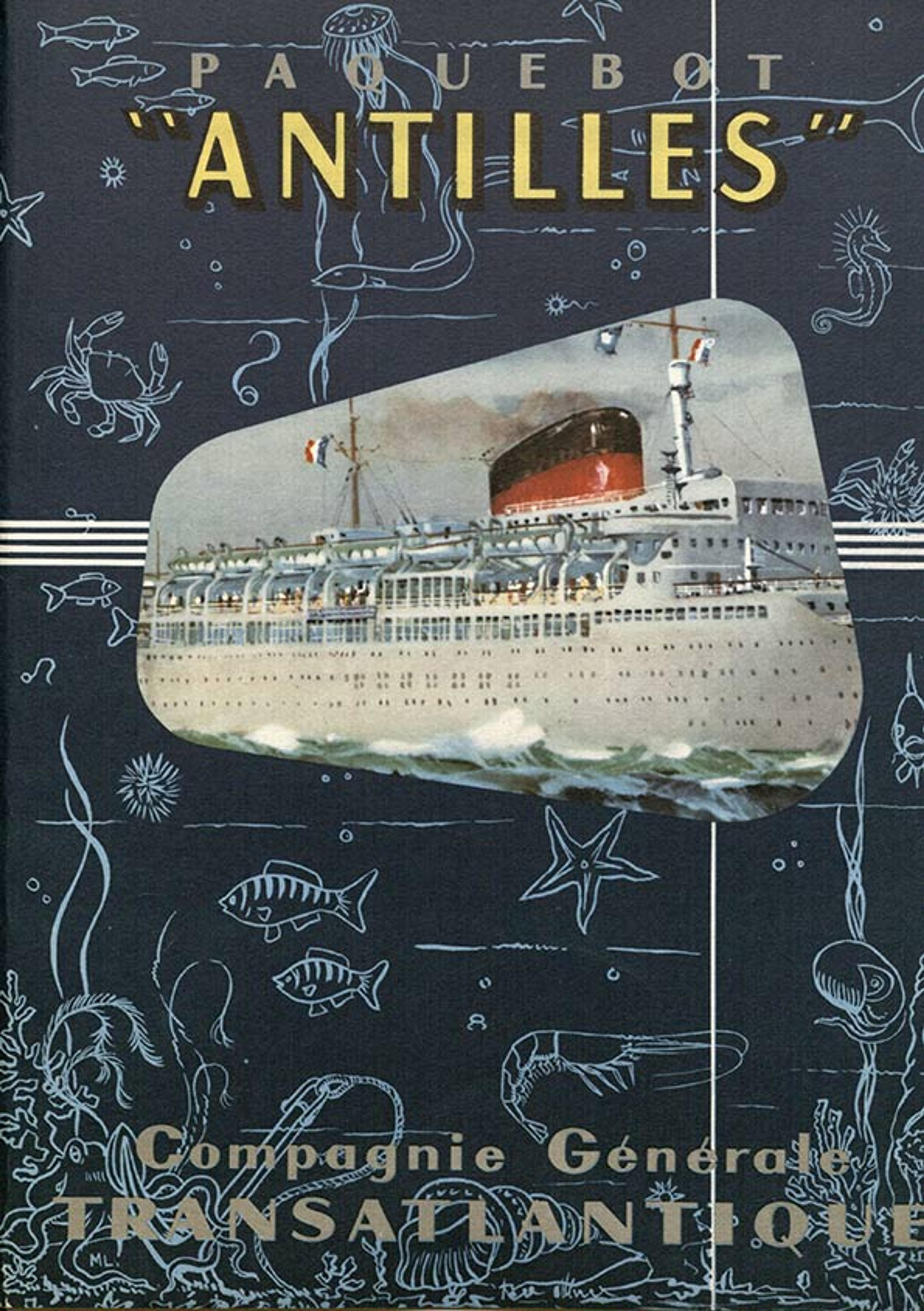
Antilles cruise ship (1961)
The display also features cruise ship brochure bindings which are often both whimsical and colorful, utilizing a range of techniques from illustrative to embossed covers. The brochures on display include the Antilles cruise ship (1961) which debuted in 1953 and entered cruise service in the West Indies in the 1960s, and an advertising booklet for Norddeutscher Lloyd, the North German Lloyd ship line titled Lloyd Express: Bremen, Europa, Columbus (1925).
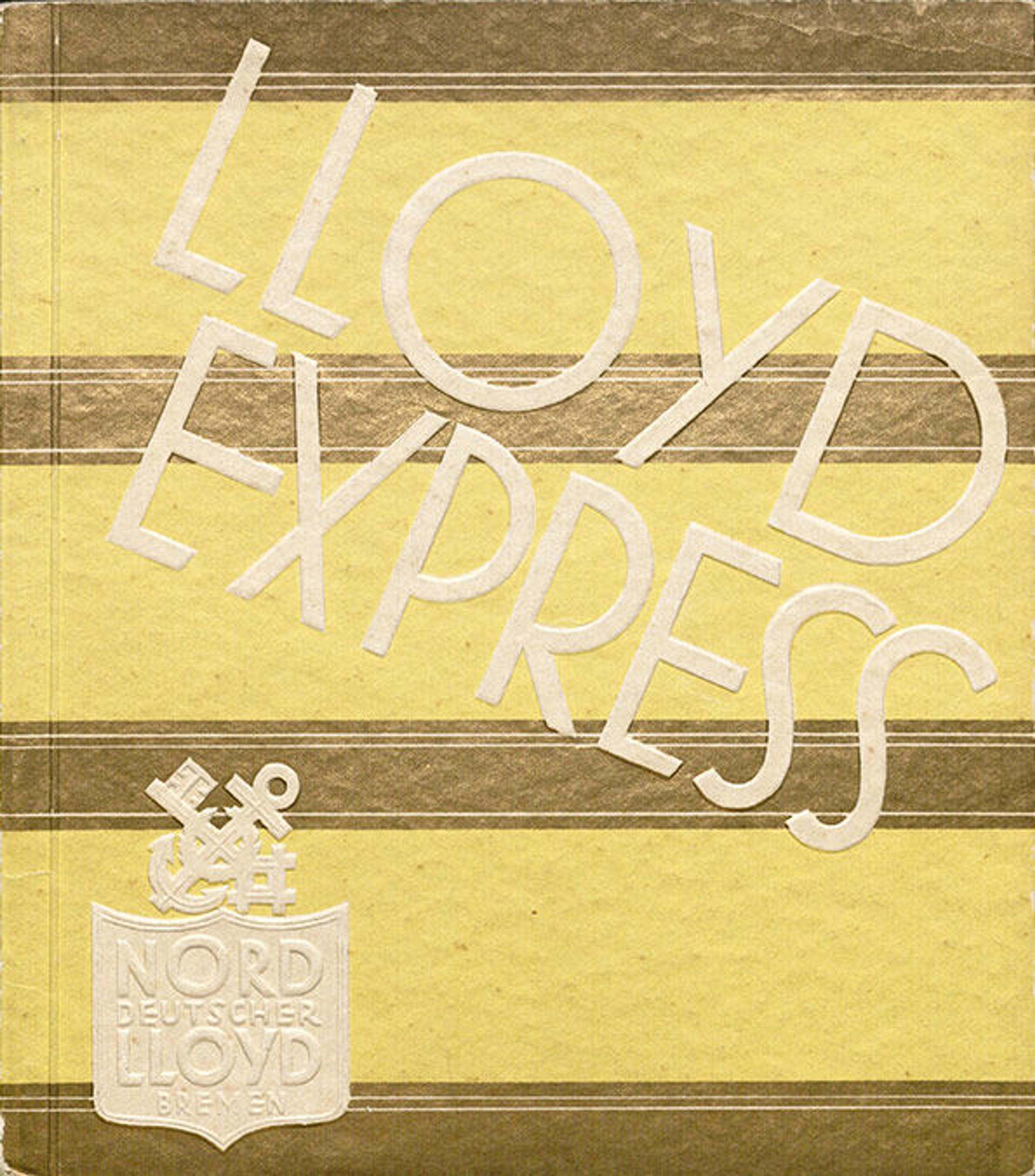
Lloyd Express: Bremen, Europa, Columbus (1925)
In addition to these nautical catalogs on display, Watson owns over twenty cruise ship brochures—including eight publications on the Normandie steamship, some featuring Jean Dupas's History of Navigation mural from the Met's collection.
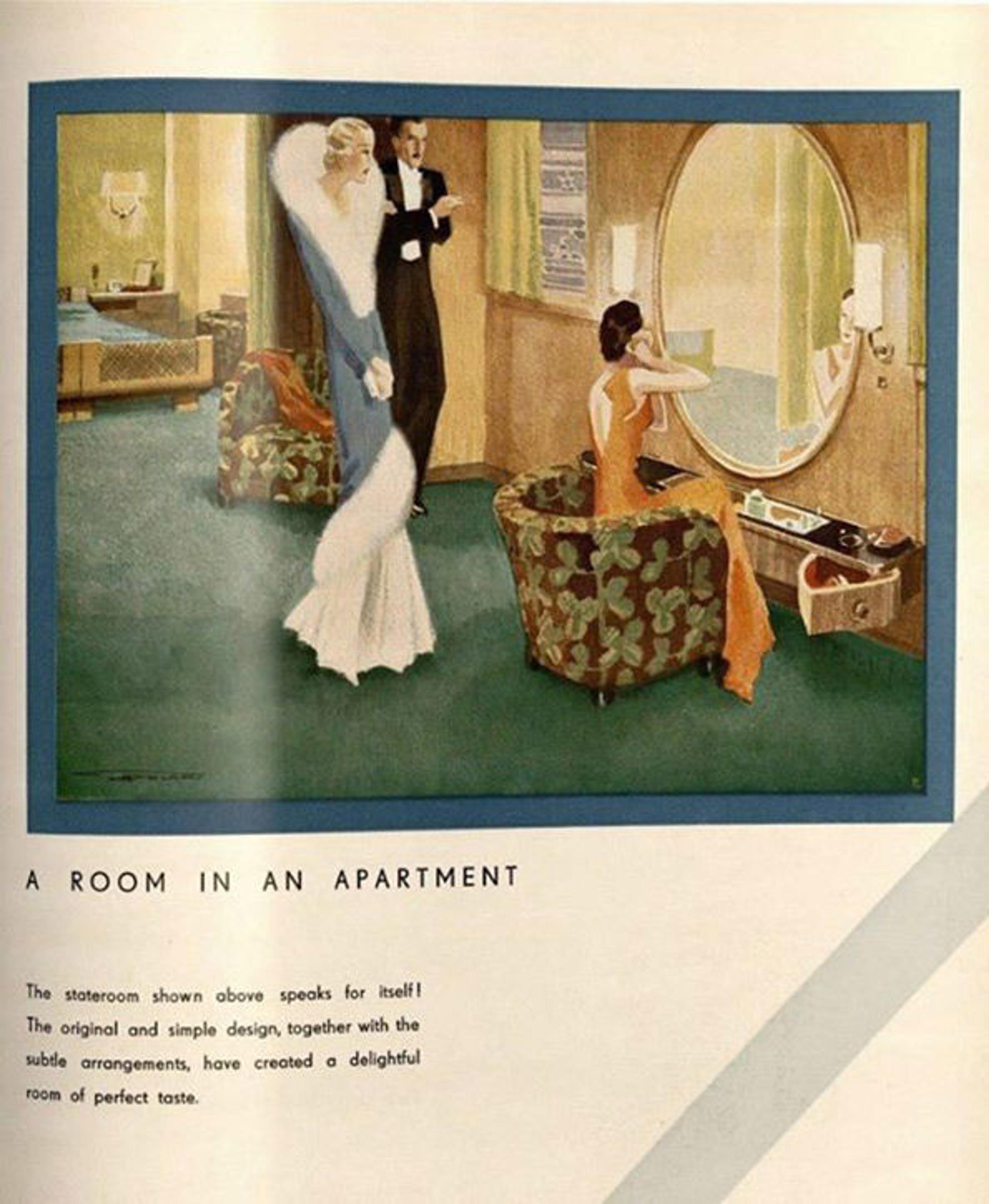
SS Conti di Savoia
The library also has in its holdings brochures of the RMS Queen Mary, the Italian ocean liner SS Conti di Savoia, and the Swedish cruise ship that belonged to Swedish American Line, M/S Kungsholm. And as an interesting bit of trivia about the latter cruise liner: J.D. Salinger served as the vessel's entertainment director in 1941, and later conjured a vision of the ship in his 1947 short story, "A Young Girl in 1941 with No Waist at All." Here's a passage from that story: "The only sound in the night came from the Havana harbor water sucking gently against the sides of the ship. Through the moon mist the Kungsholm could be seen, anchored sleepy and rich, just a few hundred feet aft."

M/S Kungsholm
In addition to transport, the library owns thousands of manufacturer, wholesale, and retail catalogs on a range of topics dating from the eighteenth century to the present. With an emphasis on the decorative arts, especially Art Nouveau and Art Deco design, subjects range from fashion, silks, textiles, and wallpaper to furniture, industrial design, jewelry, and ceramics. Other subjects include ornamental motifs, wrought iron, elevators, clocks, tableware, tiles, stoves, fireplaces, lighting, artist materials, picture frames, woodwork, paneling, and typography.
Stay tuned for future Watson vitrine displays featuring trade catalogs on other captivating subjects. Also, check out our cruise ships and Art Deco Facebook album.
Holly Phillips
Holly Phillips is the collections manager for acquisitions in Thomas J. Watson Library.
Diane De Fazio
Diane De Fazio is a volunteer in the Thomas J. Watson Library.